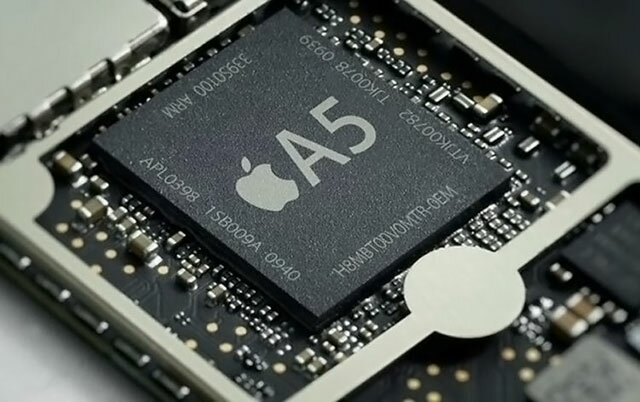Apple will not withstand the Intel PC market chips, even the MacBook

For several decades many companies are developing processors for PCs and / or servers. In these factories employed hundreds or even thousands of engineers, but now only two companies create a competitive chips for PCs, five companies are developing processors for servers and a number – chips for mobile devices, embedded applications and other products.
Apple has never tried to develop its own processors, and used other people’s chips. To do this, there were many reasons, chief among which are the advanced technologies needed to create a competitive processor, a lot of experience in this area, a portfolio of patents and so on. But Apple has begun to develop their own system on a chip for mobile devices like the iPhone or iPad.
With the launch of its own energy-saving processors A4 and A5, Apple gets a lot of money, now she does not need to give for systems on chips from third-party companies like NVIDIA and Qualcomm. Moreover, the design of systems on a chip does not mean that the work was done from scratch: the company has licensed the architecture from ARM, and then tweaked it by adding the necessary elements of the unique logic of the crystal. The company is now working a lot of experts on the design of energy-efficient chips and it continues to hire experts, so that in future series chips A promise to be just more competitive. Learn more about .
Jon Peddie (Jon Peddie), head of market research firm Jon Peddie Research, said: «Apple makes some aspects of its design through systems on a chip, in order to get exactly what she wants and not get an exact duplicate of someone else’s design (eg, Samsung). She would never sell these chips, which will remain exclusive to Apple, so we have to guess, trying to determine what these chips and what are its characteristics – it is part of an overall plan for Apple, providing for withholding their secrets a secret. ”
But these chips are not only easier to build than a full-fledged design a microprocessor that could become the heart of the laptop or desktop PC. This approach provides a lot of companies and economic benefits. Today, Apple sells hundreds of millions of iOS-devices running A4/A5 per year, while Mac shipments much lower (about 20 million a year). Thus, the cost of creating your own complex chips for PCs, to replace the Intel and AMD processors in the Mac is incomparably higher. “Volumes of supplies of Apple laptops are much lower than the devices iOS, and research and development to produce competitive processors for notebooks much more expensive, so it is not economically feasible,” – says a leading analyst at Insight 64 Nathan Brookwood (Nathan Brookwood).
It is much more reason for Apple not to develop chips for desktops and notebooks Mac. Many patented microprocessor technologies AMD, Intel, IBM, Sun / Oracle and several other companies. As a result, Apple runs the risk of getting involved in a patent war with established developers of chips. To avoid such conflicts, Apple will take years or develop their own broad portfolio of patents for the conclusion of cross-licensing agreements. Mr. Brookwood said that in developing x86-compatible CPUs, there are large barriers relating to intellectual property.
Even if Apple will be able to avoid legal problems with other companies to create your own powerful processor, it will have to hire many new engineers and develop many technologies that would allow it to circumvent performance chips from AMD and Intel. It has long been a single company can not circumvent Intel’s performance. «Apple to circumvent Intel’s chip design in the field, where reigns Intel. Among the many companies trying to do this, including IBM, TI, AMD, NEC, and STM, only one, AMD, managed with great difficulty to achieve some success, “- said an analyst at Insight 64.
It should also be remembered that the success of high-end processors depends not only on the technology used in the design, but also the used for their production process technology. It is impossible to put billions of transistors on a chip, manufactured in compliance with outdated regulations, as it would be expensive and would consume too much energy. After about three years, Intel has to produce 14-nanometer chips, while the other players in the market at best will be left behind by one step, relying in the production of its decisions on the 20 nm standards. As a result, Intel is much easier to create high-performance chips.
Finally, even if Apple will be able to develop a relatively powerful chip based on ARM, whose performance will be comparable to or higher than the most advanced chip x86, it is hardly able to move all customers and software developers for the Mac OS from x86 to ARM. Go to the Power architecture to x86 in the mid-2000s was painful, but in the end and allowed Apple to increase its presence in the PC market. With the move to ARM can not guarantee anything.
If you do a brief derivation of the above, then, despite the development of Apple chips for its mobile products like the iPad and iPhone, for it not only is there no economic sense to begin to compete with Intel, its main supplier for today, but it is hardly possible to achieve success in this field. As a result, we should not expect that the chips Apple will be in computer-based Mac – kupertinskaya company will continue to rely on the decision Intel.

